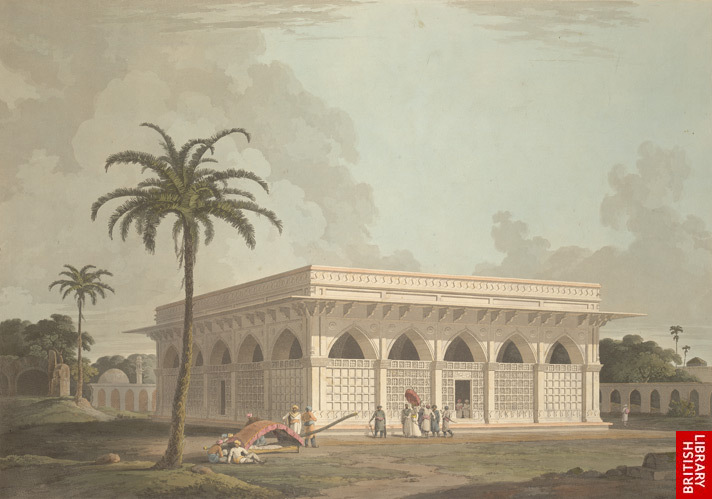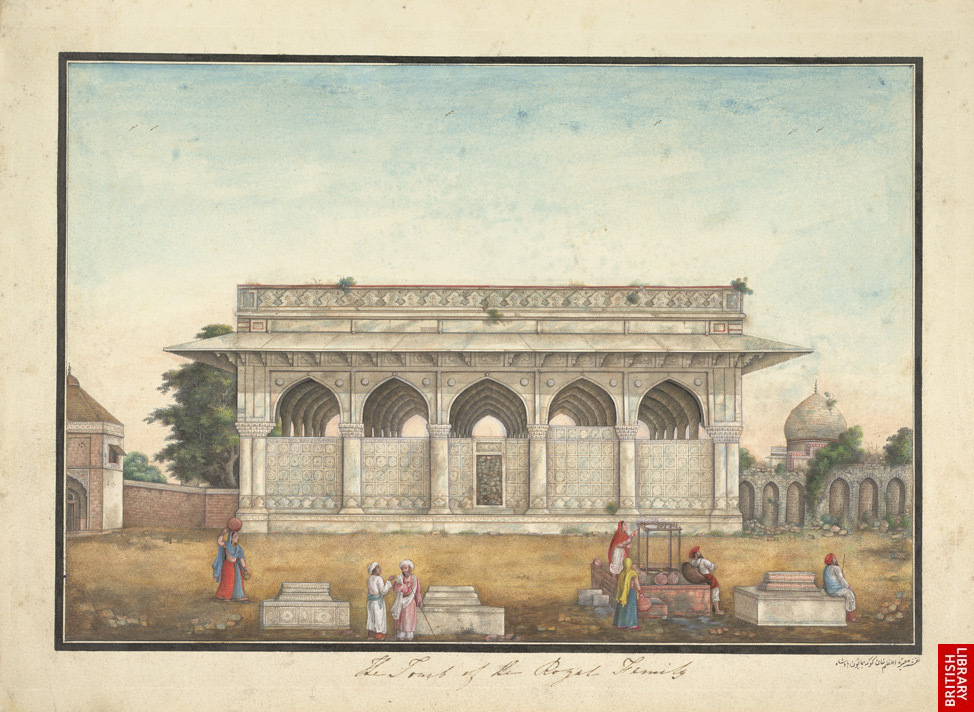


"Watercolour of the Chaunsath Khambe (Pavilion of Sixty-four pillars) containing the tomb of A'zam Khan Kokah in Delhi and by a Delhi artist, c. 1820-25. Inscribed in Persian characters: 'Naqshah i maqbarah i A'zam Khan Kokah i Humayun i padshah' (Picture of the tomb of A'zam Khan Kokah [i.e.foster brother] of Emperor Humayun); in English: 'The Tomb of the Royal Family.'
Mirza Aziz Koka was the foster brother of Emperor Akbar (r.1556-1605) and the son of Atgah Khan. His tomb, shown in this drawing, is situtated outside the shrine of Nizamuddin. It is popularly known as Chausanth Khamba and is constructed wholly of white marble with 64 pillars inside, from which it derives its name of Chaunsath Khamba (64 pillars). It was built by Aziz Koka in his life time and when he died in 1624 at Ahmedabad, he was brought here and buried. The domed tomb in the background is that of his father Atga Yhan (died 1562), foster-father of Akbar. These buildings are all set in the shrine complex of Nizam al-Din Aulia, which is located south of Delhi."
== Indian Routes index == Indian Routes sitemap == Glossary == FWP's main page ==